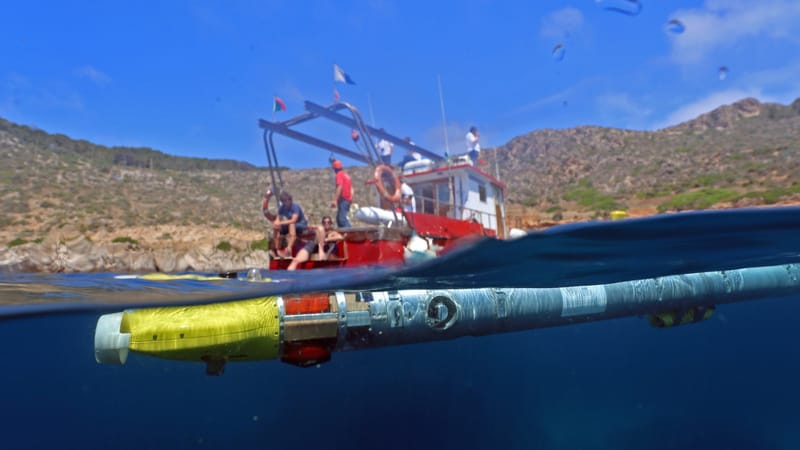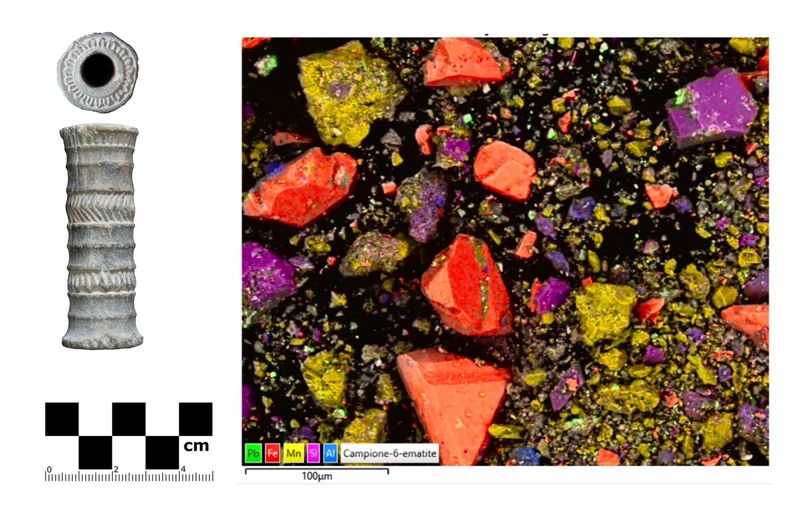New discoveries from the Copper Age in northern Italy
A study by the University of Padua sheds light on copper locations and processing in Italy in the 4th and 3rd millennia.
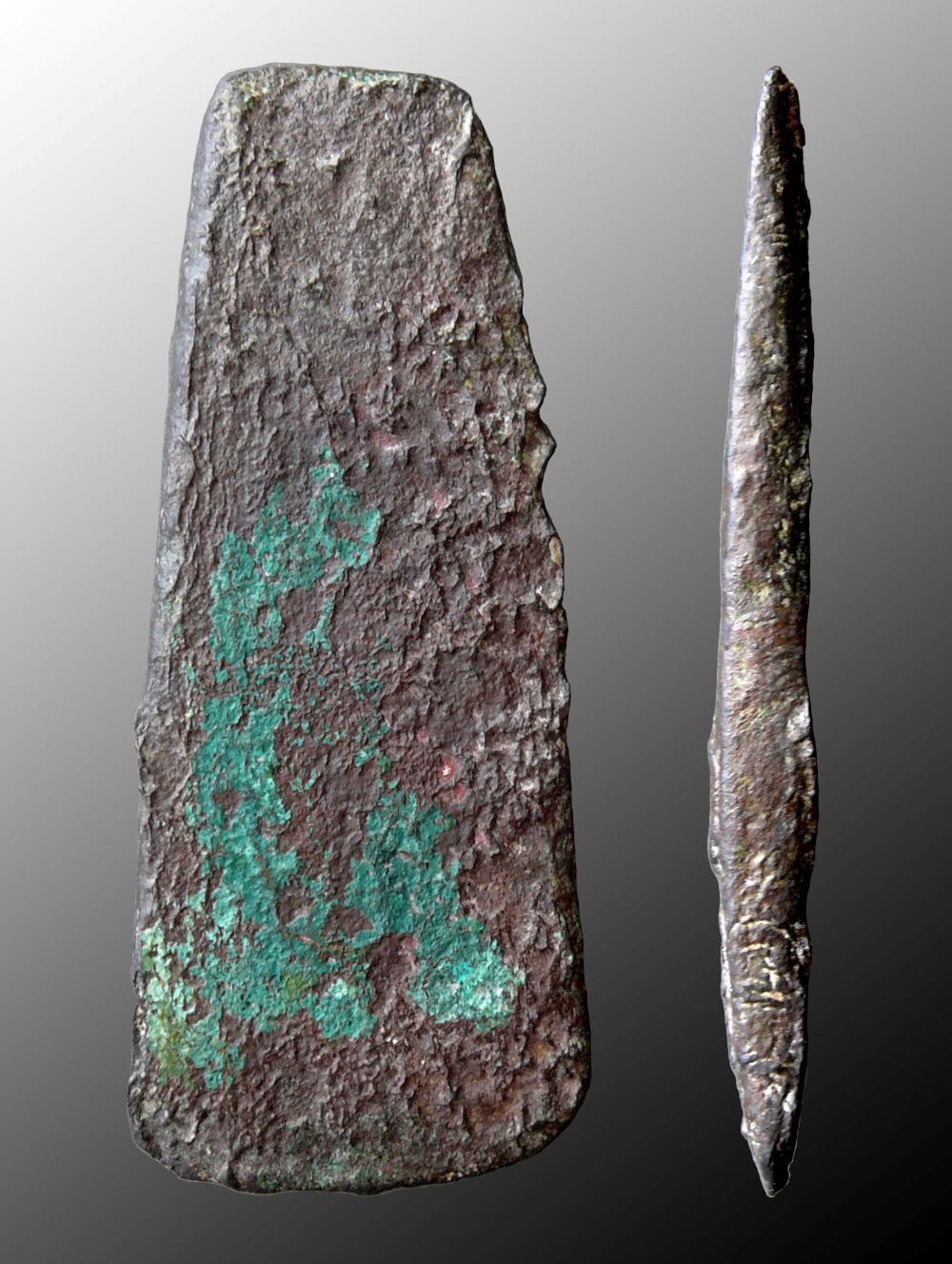
That the copper mining area of the axe of Ötzi-the Similaun Man found on Sept. 19, 1991, in the Ötztal Alps-was southern Tuscany was an established fact from previous investigations.

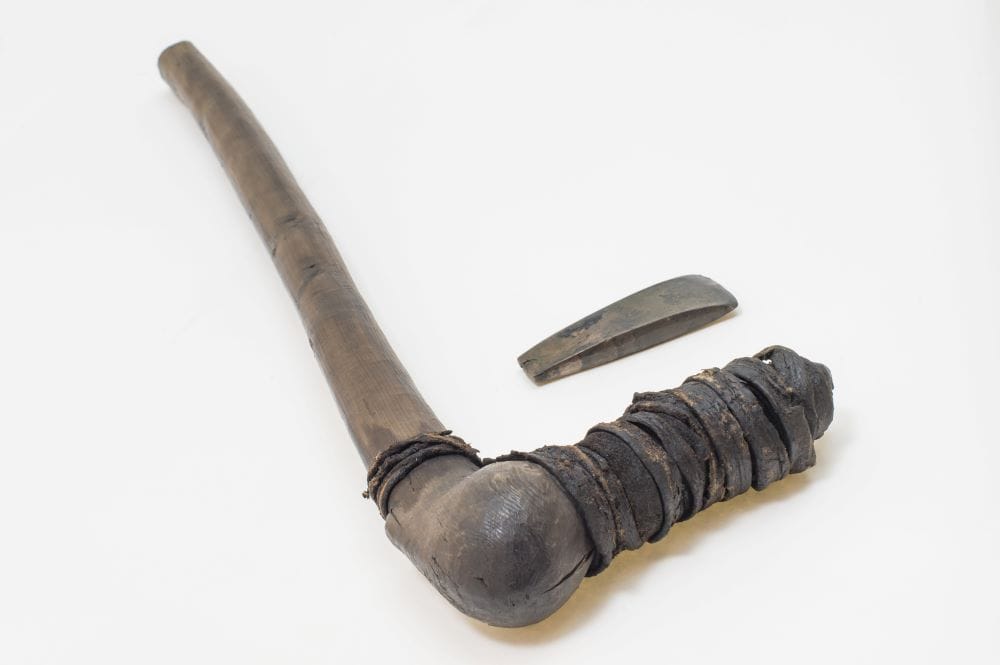
Left: Photo of Ötzi reconstruction © South Tyrol Museum of Archaeology / photo-dpi.com Right: Copper axe of Ötzi, the Iceman (3300 BC) © South Tyrol Museum of Archaeology / H. Wisthaler
Now a new study, conducted by researchers at the University of Padua in collaboration with the South Tyrol Archaeological Museum, clarifies how copper production in prehistoric times was linked to very well-defined areas depending on the period. Between the end of the fifth and the beginning of the fourth millennium, there was no copper production in Italy, and all found objects containing this metal came from the Balkans. From 3500-3600 B.C., however, there is an explosion of copper production in Tuscany. In the Alps, and particularly in the Southeastern Alps, copper production does not begin until after 2800 B.C. and then gradually expands to reach massive production in the second part of the 3rd millennium B.C. Alpine production then continued extensively in the later Bronze Age.
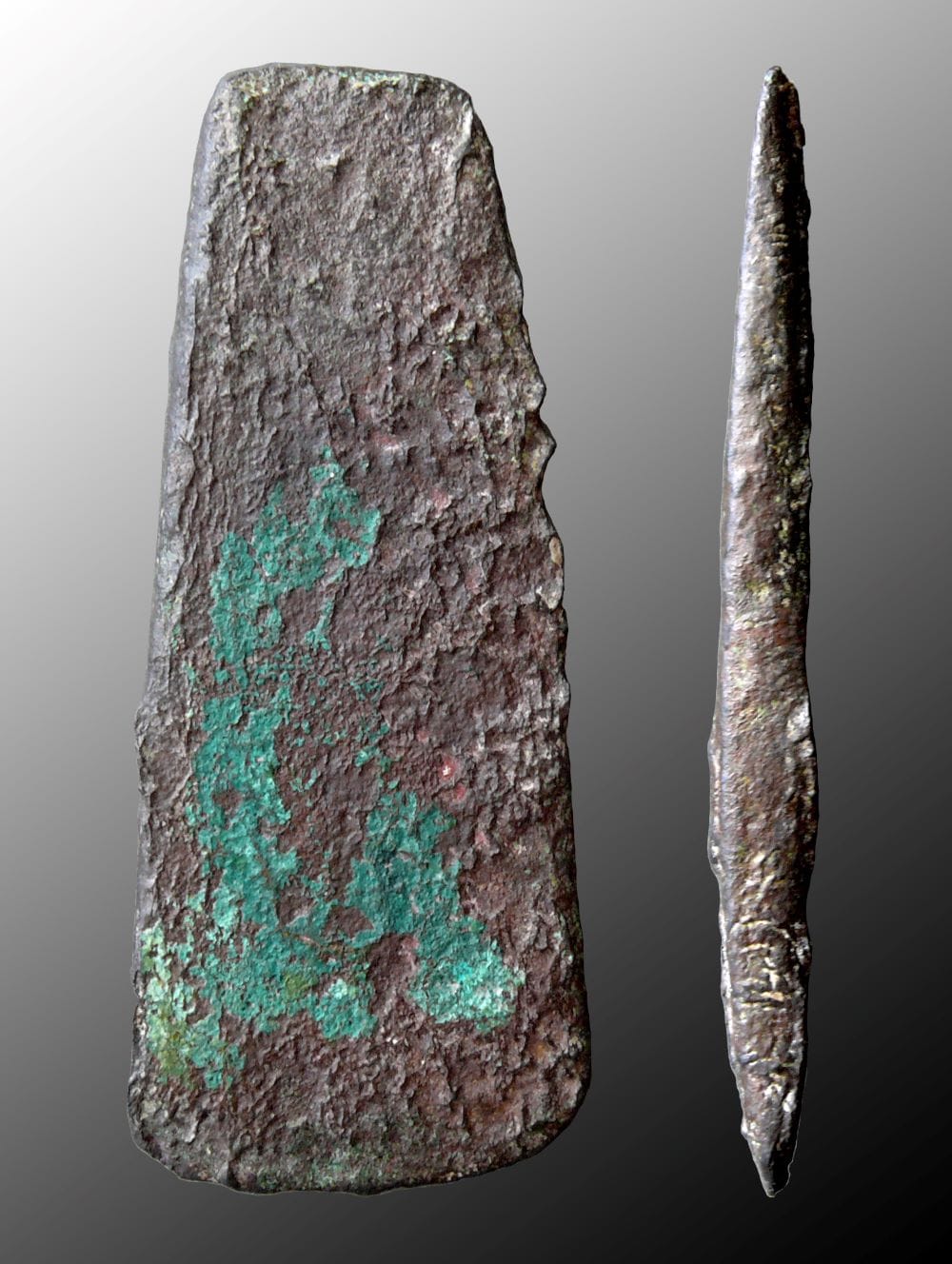
"With this study we get a comprehensive picture of copper mining and dissemination in the southern Alps, northern Italy and central Italy," comments Günther Kaufmann, archaeologist and project manager at the South Tyrol Museum of Archaeology. " The results allow us to understand where people in the southern Alpine area obtained the earliest copper from, what extensive trade routes they traveled, and from when the Alpine population began mining the local copper ore. As is well known, the raw material for Ötzi's copper blade came from southern Tuscany. The scientific findings of our 2016 research team, which initially surprised the archaeological community, have now been largely confirmed: at the end of the 4th millennium BCE, the time when Ötzi lived, the copper used in northern Italy came from central Italy and was exported as far as the southern and northern Alpine regions. Only a few centuries after the Iceman, copper mining developed from deposits in the southern Alps."
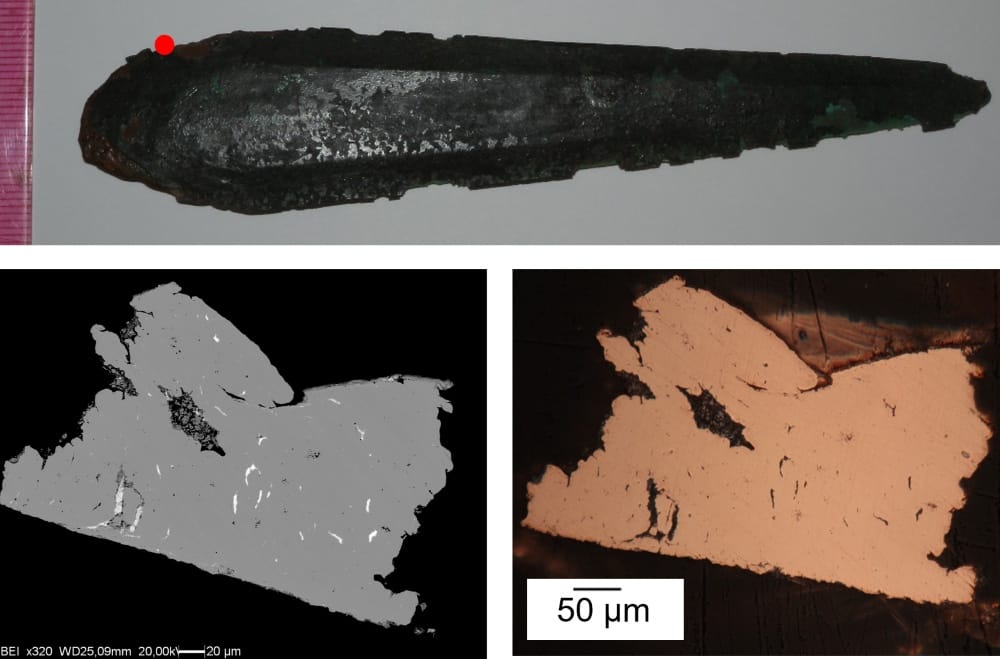
The study, entitled. Lead isotopes of prehistoric copper tools define metallurgical phases in Late Neolithic and Eneolithic Italy and published in the journal Scientific Reports, conducted isotopic and chemical analyses of more than 50 objects provided by several Italian and Austrian museums.
"The strength of the project was to select a good number of finds of great archaeological importance," explains Gilberto Artioli, a full professor in the Department of Geosciences at the University of Padua and the study's first author. " Predominantly they are axes, but we also have small objects such as lesins and objects referable to a chronological phase in which copper was still definitely a valuable and also quite rare material. Isotopic analyses of the trace amounts of lead contained in metal finds, combined with those of the chemical impurities of copper, have shown how with a good reference database we can reliably reconstruct the provenances of objects. With this work, we have revolutionized the model of copper metallurgy in the Final Neolithic and Copper Age and have been able to answer many questions about the stages of diffusion and provenance of this metal in prehistoric times in Italy."
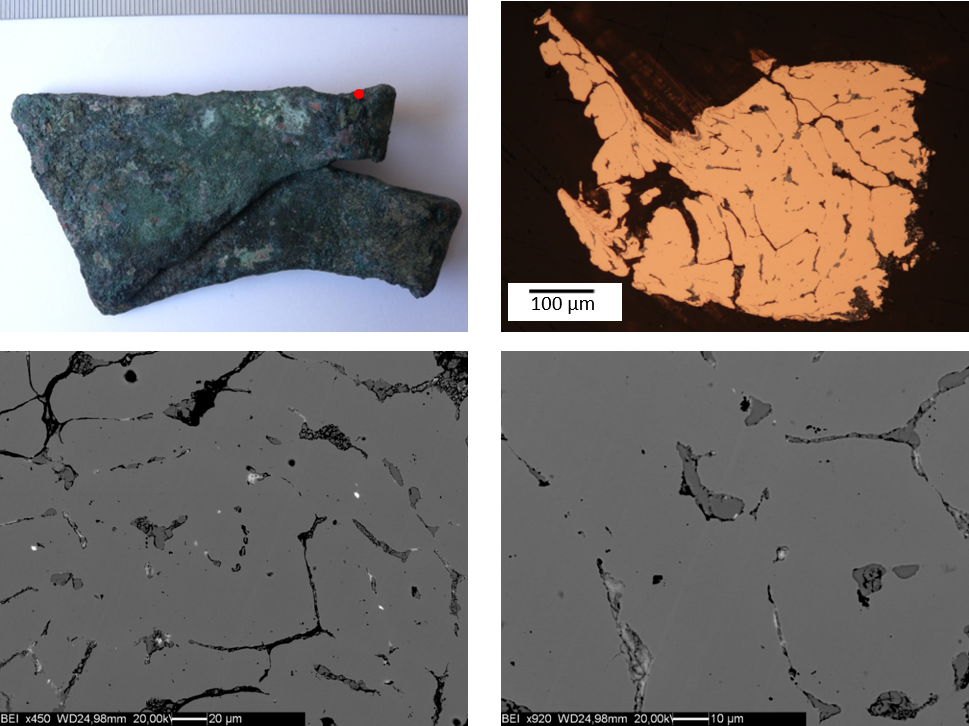
Each copper deposit has a distinct geologic age of mineralization. Lead isotope ratios are related to the age of the deposit. During the metallurgical process, that is, the extraction of copper from ores and the incorporation of the metal into objects, the isotopic signal remains unchanged. Therefore, by analyzing the traces of lead that are contained in the copper of the object, the researchers were able to trace the same signal that exists in the geological deposit of origin.
In addition, by combining isotopic and chemical information, any ambiguity in the origin of the material is resolved by geochemical tracers in most cases of coeval deposits.
An element of complexity is the attribution of objects to a precise chronology, especially when the artifacts do not come from recent stratigraphic excavations and dating is done only on a typological basis, which is sometimes debated.
"It is very difficult when we do not know the context of the find," says Prof. Ivana Angelini of the Department of Cultural Heritage at the University of Padua and co-author of the study. " However, for some of the objects studied, it was possible to make use of absolute radiocarbon dating referring to materials found in context, for example, the bones present in the tombs where the metals were found. This made it possible to sequence, from a chronological point of view, some of the objects analyzed."





